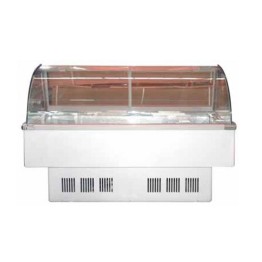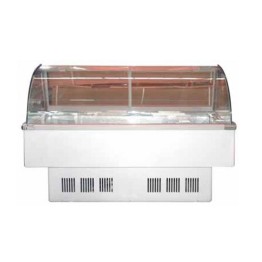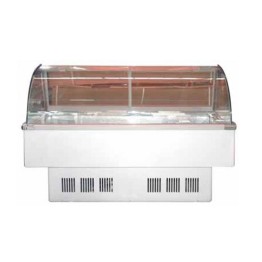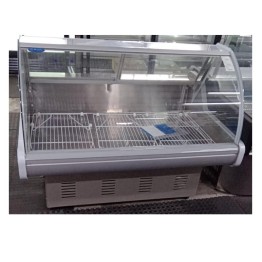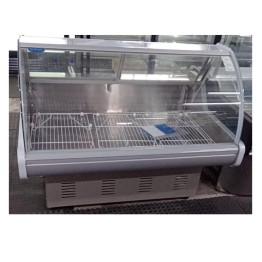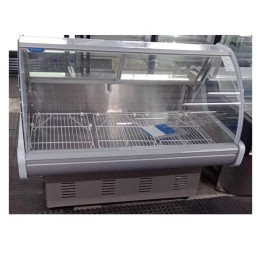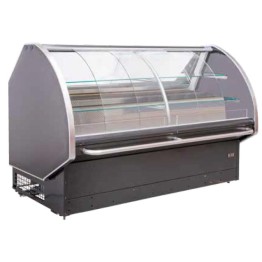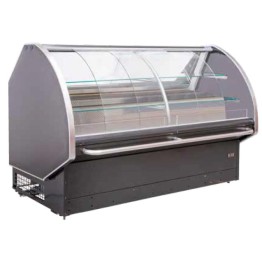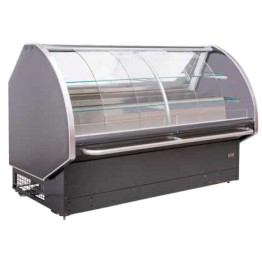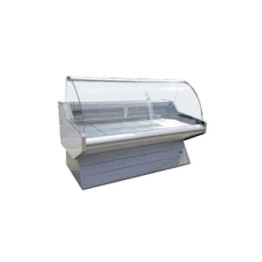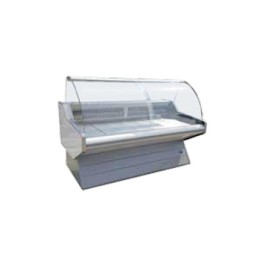Meat Displays / Deli Displays

Meat Displays and Deli Displays: The Essential Guide
In the fast-paced world of the food industry, enticing meat displays can make all the difference in attracting customers and boosting sales. When it comes to meat and deli products, an eye-catching and well-organized display is especially vital. A thoughtfully arranged meat display and deli display can not only showcase the quality and variety of your offerings but also make a lasting impression on potential customers.
From succulent cuts of meat to gourmet cheeses and gourmet salads, a well-presented deli display can truly elevate the overall shopping experience, enticing customers to explore and indulge. The art of creating a visually appealing and enticing display requires attention to detail, creative design, and an understanding of your target audience's preferences. Whether it's a local butcher shop or a high-end deli, a well-curated display can convey professionalism, quality, and expertise.
In this article, we will delve into the essential elements of a successful meat display and deli display, offering you valuable insights and practical tips on how to create captivating displays that not only attract customers but also enhance their overall shopping experience. So, let's dive in and unlock the secrets to creating a winning meat and deli display that leaves a lasting impression.
Importance of Meat displays
The importance of meat displays cannot be overstated in the context of the food retail industry. These displays are often the first point of contact between the product and the potential customer, and they can influence purchasing decisions significantly. An attractive display has the power to draw customers in, stimulating their senses and enticing them to buy.
A display acts as a silent salesman; it is a visual communication tool that tells a story about the freshness, quality, and care that goes into the products on offer. When done right, meat displays can create an ambience that resonates with the brand's values, which in turn can foster customer loyalty and repeat business.
Furthermore, these displays can be instrumental in setting a shop apart from its competitors. In a market where consumers have a plethora of choices, a distinctive and appealing display can be a compelling differentiator. It's not just about presenting products; it's about crafting an immersive experience that leaves a memorable imprint on the customer's mind.
Types of Meat displays
The variety in meat displays is as extensive as the products they showcase. These displays can range from simple and rustic wooden crates to sophisticated and modern refrigerated cases. Traditional meat displays often feature hanging carcasses and large cuts that emphasize the freshness and full range of offerings. This approach can be particularly effective in markets where customers are seeking traditional butcher shop experiences.
On the other hand, deli displays tend to be more diverse, with products like cured meats, cheeses, olives, and prepared salads. These can be presented in open-air cases, baskets, or on tiered stands to add dimension and interest. For upscale delis, the use of glass-fronted refrigerated cabinets allows for a clear view of the products while maintaining the appropriate temperature and humidity levels.
In addition to the typical refrigerated displays, there are also mobile units that can be used for promotional activities or to cater to seasonal demand. These units offer flexibility and can be placed strategically to capture the attention of customers, potentially increasing impulse purchases of featured items.
Factors to Consider When Designing a Meat and Deli Display
When designing a meat and deli display, there are several factors to take into account to ensure that the end result is both aesthetically pleasing and functional. The primary consideration is the target customer base and their preferences. Understanding the demographic that the display is intended to attract will guide the selection of products and the overall design theme.
The layout of the store and the available space will also influence the display design. Efficient use of space is crucial, and the display should be designed to facilitate easy customer flow and access to products. It’s important to balance the desire to showcase a wide variety with the need to prevent overcrowding, which can detract from the display's appeal.
Temperature control is another critical factor, particularly for meat displays where maintaining the correct temperature is essential for food safety. The choice of refrigeration units must align with the types of products being displayed and their specific temperature requirements. The equipment should also be energy-efficient and have minimal noise levels to create a pleasant shopping environment.
Arranging Products for Maximum Visual Impact
The arrangement of products within a display is an art form that requires a strategic approach. The goal is to create a display that is not only visually appealing but also encourages customers to explore and ultimately make a purchase. It's important to create focal points within the display by using height and depth to draw the eye to the premium or featured products.
Colour plays a significant role in creating visual impact. Grouping products with contrasting colours can make the display pop, while complementary colours can create a sense of harmony. Additionally, thought should be given to the use of props and garnishes to enhance the presentation of the products; for instance, fresh herbs can add a touch of greenery and suggest freshness.
The sequence in which products are arranged is also important. Placing complementary items near each other can suggest meal ideas and encourage additional purchases. For example, displaying a selection of fine cheeses alongside a range of premium crackers and chutneys can inspire customers to buy all the components for a cheeseboard.
Using Signage and Labels Effectively
Signage and labels serve as essential guides for customers navigating meat displays. Well-designed signs can communicate a wealth of information, including product names, prices, origins, and special attributes such as "grass-fed" or "organic". It's vital that the signage is clear, easy to read, and consistent in style to maintain a professional appearance.
Labels are not just informational; they can also be persuasive. Compelling product descriptions can entice customers to try new items or learn more about a product's backstory, which can be a powerful selling point. For example, a label describing the artisanal methods used to create a particular cheese can create a connection between the customer and the craftsmanship behind the product.
In addition to information and persuasion, signage can also be used for navigation. Category headers and directional signs can help customers find their way around the display with ease, improving the overall shopping experience. It's also worth considering the use of digital signage, which can be updated easily and used to highlight promotions or new products.
Maintaining Cleanliness and Hygiene in Meat displays
Cleanliness and hygiene are paramount in any food display, but they are especially critical in meat displays due to the perishable nature of the products. A clean display is not only more appealing but it also signals to customers that the store is conscientious about food safety.
Regular cleaning schedules should be established to ensure that all surfaces, including glass, shelving, and refrigeration units, are sanitized frequently. Cross-contamination must be avoided, so separate utensils and cutting boards should be used for different types of products. Furthermore, perishable items should be monitored closely, and any products that are past their peak should be removed from the display.
Temperature monitoring is also a key aspect of maintaining hygiene. Refrigeration units should be checked regularly to verify that they are operating within the safe temperature ranges. Any fluctuations should be addressed immediately to prevent the risk of bacteria growth and to ensure the longevity and freshness of the products on display.
Promoting Specials and Seasonal Products
Promotions are a great way to attract attention to a meat and deli display and to encourage customers to try new products or stock up on favourites. Special offers such as discounts, buy-one-get-one-free deals, or bundled packages can create excitement and a sense of urgency.
Seasonal products can also add variety to the display and cater to changing customer preferences throughout the year. For instance, offering seasonal meats like game during the autumn or special holiday-themed items can draw in customers looking for something unique for their celebrations.
Highlighting these specials and seasonal products requires thoughtful placement within the display, ensuring they are prominently featured and easily accessible. Signage should be used to draw attention to these items, and staff should be knowledgeable about the promotions to assist customers and provide recommendations.
Incorporating Technology in Meat displays
Technology is increasingly playing a role in the design and functionality of meat displays. Digital screens can be used to provide rotating images of products, cooking suggestions, or even videos showing the provenance of the items. These dynamic displays can capture the attention of customers and provide a wealth of information in an engaging format.
Another technological advancement is the use of smart labels and QR codes. Customers can scan these codes with their smartphones to access detailed product information, recipes, or traceability data. This not only enhances the customer experience but also caters to the growing demand for transparency in food sourcing.
Moreover, technology can be utilised for inventory management. Sensors and RFID tags can help track stock levels, ensuring that popular items are always available and that the display remains full and inviting. This can also aid in reducing waste by identifying items that are not selling as well and adjusting orders accordingly.
Best Practices for Rotating and Restocking Products
An effective meat and deli display is one that looks abundant and fresh at all times. This requires diligent rotation and restocking of products. Best practices include implementing a first-in, first-out (FIFO) system to ensure that older stock is sold before newer deliveries. This helps maintain the freshness of the products and reduces the risk of spoilage.
Restocking should be done during slower periods to minimise disruption to the shopping experience. Careful attention should be paid to the placement of products during restocking to maintain the overall aesthetic of the display. It's also a good opportunity to assess the display's appeal and make any necessary adjustments to enhance its attractiveness.
Training staff in proper rotation and restocking techniques is vital. They should be able to identify when products need to be replenished and have a keen eye for detail to ensure that the display remains pristine. Staff should also be encouraged to engage with customers, offering samples or sharing knowledge about the products, which can lead to increased sales.
Enhancing the Customer Experience Through Well-Designed Meat displays
In conclusion, a well-designed meat and deli display can significantly enhance the customer experience, leading to increased sales and customer loyalty. The key elements of a successful display include an understanding of the target audience, a strategic layout, effective use of signage and labels, and meticulous attention to cleanliness and hygiene.
Promotions and the incorporation of technology can add an extra layer of engagement, while best practices in rotating and restocking ensure that the display remains fresh and appealing. Ultimately, the goal is to create a display that not only showcases the quality and variety of the products but also provides an immersive and enjoyable shopping experience.
By following the insights and practical tips provided in this article, food retailers can craft meat displays that are not just visually stunning but also cater to the evolving needs and preferences of their customers. In the competitive landscape of the food industry, a captivating display can be the difference that sets your business apart and leaves a lasting impression on every customer who walks through your doors.
Butchery Meat Display Fridge - Curved Glass 1500mm Economy
Butchery Meat Display Fridge - Curved Glass 1500MmSize(Mm): 1500(W) X 1100 (D) X 1350(H)Electric 220..
R23,743.75 R33,919.64 Ex Tax: R23,743.75
Butchery Meat Display Fridge - Curved Glass 1800mm Economy
Butchery Meat Display Fridge - Curved Glass 1800MmSize(Mm): 1800(W) X 1100 (D) X 1350(H)Electric 220..
R28,743.75 R41,062.50 Ex Tax: R28,743.75
Butchery Meat Display Fridge - Curved Glass 2400mm Economy
Butchery Meat Display Fridge - Curved Glass 2400MmSize(Mm): 2400(W) X 1100 (D) X 1350(H)Electric 220..
R34,993.75 R49,991.07 Ex Tax: R34,993.75
Display Fridge Butchery Ecoplus Curved Glass Floor Model 1.5M
Display Fridge Butchery Ecoplus Curved Glass Floor Model 1.5MVoltage: 220VTemperature: 0-5 degreesDi..
R28,743.75 R41,062.50 Ex Tax: R28,743.75
Display Fridge Butchery Ecoplus Curved Glass Floor Model 2.5M
Display Fridge Butchery Ecoplus Curved Glass Floor Model 2.5MVoltage: 220VTemperature: 0-5 degreesDi..
R36,243.75 R51,776.79 Ex Tax: R36,243.75
Display Fridge Butchery Ecoplus Curved Glass Floor Model 2M
Display Fridge Butchery Ecoplus Curved Glass Floor Model 2MVoltage: 220VTemperature: 0-5 degreesDime..
R31,243.75 R44,633.93 Ex Tax: R31,243.75
Just Deli Range - Counter Chiller Curved Glass 1.2M
Just Deli Range - Counter Chiller Curved Glass 1.2MSize(Mm): 1250 x 1305 x 1200Features:- Front Slid..
R52,147.50 R69,530.00 Ex Tax: R52,147.50
Just Deli Range - Counter Chiller Curved Glass 1.8M
Just Deli Range - Counter Chiller Curved Glass 1.8MSize(Mm): 1250 (h) x 1915 (w) x 1200 (d)Features:..
R62,286.56 R83,048.00 Ex Tax: R62,286.56
Just Deli Range - Counter Chiller Curved Glass 2.4M
Just Deli Range - Counter Chiller Curved Glass 2.4MSize(Mm): 1250 x 2520 x 1200Features:- Front Slid..
R70,816.88 R94,422.00 Ex Tax: R70,816.88
Just Value Range Meat Cabinet - Curved Glass Meat Chiller 1.8M
Just Value Range Meat Cabinet - Curved Glass Meat Chiller 1.8MSize(Mm): 1910(W) X 1100(D) X 1350(H)..
R45,000.94 R60,001.25 Ex Tax: R45,000.94
Just Value Range Meat Cabinet - Curved Glass Meat Chiller 2.4M
Just Value Range Meat Cabinet - Curved Glass Meat Chiller 2.4MSize(Mm): 2520(W) X 1100(D) X 1350(H)..
R57,224.06 R76,298.75 Ex Tax: R57,224.06

